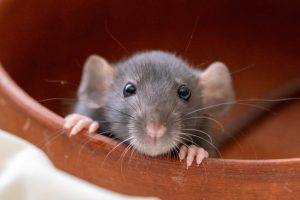Summer is in full swing, and with it comes an increased presence of bees and wasps. These insects often become a concern for homeowners, especially when they invade outdoor spaces or get too close for comfort. At Werner Pest, we want to help you understand the differences between pollinating bees and wasps, and provide you with tips on how to manage and protect your home from these buzzing visitors.
Bees vs. Wasps: The Basics
Before we dive into management tips, let’s clarify the difference between bees vs wasps. While both are flying insects that can sting, their roles in nature and behavior are quite different.
Pollinating Bees
Bees are essential pollinators and play a crucial role in our ecosystem. They help plants reproduce by transferring pollen, which is vital for fruit and vegetable production. Here’s what you should know about them:
- Appearance: Bees are generally fuzzy with a more rounded body. Their hairy bodies are covered in pollen, which they collect and carry back to their hives.
- Behavior: Bees are usually more docile and will only sting when they feel threatened. Most bees, like honeybees and bumblebees, are not aggressive and tend to focus on collecting nectar and pollen.
- Nesting: Bees typically nest in hives or colonies, which can be found in trees, crevices, or man-made hives.
Wasps
Wasps, on the other hand, have a different lifestyle and behavior compared to bees. They are more aggressive and can pose a greater threat to humans.
- Appearance: Wasps have a sleek, smooth body with a more elongated shape and are often brightly colored with yellow and black stripes.
- Behavior: Wasps are more likely to sting repeatedly and can be quite aggressive, especially when their nests are disturbed. Unlike bees, wasps do not die after stinging and can sting multiple times.
- Nesting: Wasps build their nests from paper-like material created by chewing wood fibers mixed with their saliva. Their nests are usually found in sheltered areas such as under eaves, in attics, or in wall cavities.
Managing Bees and Wasps
If you encounter bees or wasps around your home, it’s important to handle the situation carefully. Here’s how you can manage these insects:
For Bees
- Encourage Pollinators: If bees are not a direct threat, consider encouraging their presence by planting bee-friendly flowers and providing a bee habitat. Bees are beneficial for gardens and fruit trees.
- Call a Professional: If bees are nesting close to your home or pose a risk, it’s best to contact a professional pest control service like Werner Pest. We can safely relocate bee colonies without harming these essential pollinators.
For Wasps
- Eliminate Food Sources: Wasps are attracted to food and sugary drinks. Keep outdoor dining areas clean and cover food to avoid attracting them.
- Seal Entry Points: Check for and seal any potential entry points into your home. Wasps often build nests in hidden areas, so sealing cracks and gaps can help prevent them from finding a way inside.
- Professional Removal: Wasps can be aggressive, and their nests can be difficult to reach. It’s best to contact a pest control expert to handle wasp removal safely and effectively. Werner Pest has the expertise to handle these situations and ensure your home remains safe.
Stay Safe This Summer
Understanding the differences between bees and wasps can help you manage their presence effectively. If you have a bee or wasp problem, whether it’s a small swarm or a large nest, don’t hesitate to reach out to us at Werner Pest.
Contact Us Today
At Werner Pest, we’re here to help with all your pest control needs. If you’re dealing with bees or wasps, contact us to schedule an inspection and get professional assistance. Let us help you keep your home safe and comfortable this summer.


